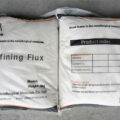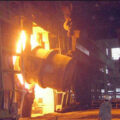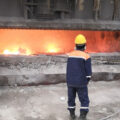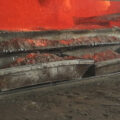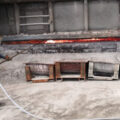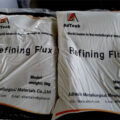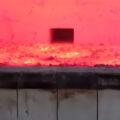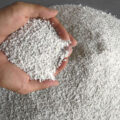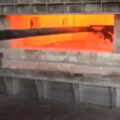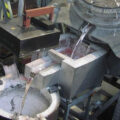Purification treatment of aluminum: The surface of the aluminum material has an uneven oxide film, which sometimes absorbs moisture, is mixed with dust, oil, and is coated with paint. When melting, the aluminum material is further oxidized in a high temperature environment, and the thickness of the oxide film increases, and it reacts with the water in the atmosphere to generate aluminum oxide and hydrogen, which increases the oxide inclusions and gas content. Therefore, after the aluminum material is melted, it must be purified to remove impurities and gases inside the aluminum liquid.
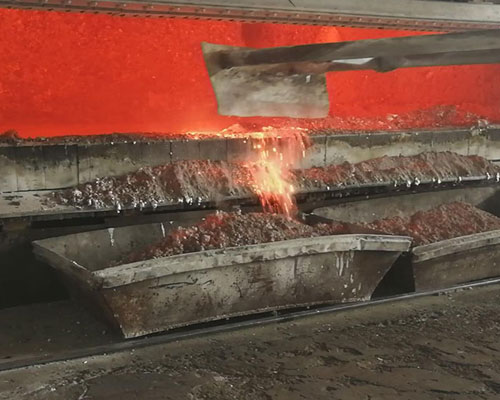
The atomic hydrogen dissolved in the molten aluminum can be combined into hydrogen molecules on the surface of solid materials with low free energy. Therefore, most of the surface of the oxide particles adsorb the hydrogen precipitated from the melt. When aluminum chemically reacts with moisture, aluminum oxide is also produced and this is also the source of hydrogen adsorption on the surface of aluminum oxide. Production practice has proved that when aluminum contains more oxidizing impurities, it also contains more hydrogen.
Purification Treatment of Aluminum
The substances used purification treatment of aluminum are collectively referred to as flux. The flux is mostly solid or gas at room temperature, and some fluxes are liquid, such as CCl4. The advantages of non-sodium granulated flux are small size, easy to transport and store, but all have strong hygroscopicity and must be sealed and packaged. In order to improve the purification effect of the solid flux, the flux can be compacted into compact small pieces and wrapped in aluminum foil, and inserted into the bottom of the molten pool in a drilling container with a long handle. For the flux based on the mixed salt of NaCl and KAl, the mixed salt can be melted according to the ratio first, and then refractory components such as Na3AlF6 are added. After stirring and cooling, it is poured into the sealed iron box. Before use, the flux should be stored in a dry place with a higher room temperature, such as next to a furnace. Usually, after the aluminum material is melted, the powdery flux mixed according to the proportion is sprinkled on the surface of the molten pool, and then the aluminum liquid is stirred with a long-handled tool to promote the floating of the ash. During the agitation process, part of the flux is added to the inside of the molten pool and chemically reacts with the aluminum liquid to form a gaseous substance insoluble in aluminum, which plays the role of degassing and ash removal during the rise of bubbles. The most frequently used flux is a powder of 2 parts cryolite mixed with 1 part ammonium chloride.

Chlorine is the most effective gas flux for purifying molten aluminum. Chlorine and aluminum form gaseous AlCl3, which rises from the bottom of the molten pool to the surface in the form of fine bubbles in the molten aluminum. During the ascent, the alumina particles adhere to the surface of the bubble, and the hydrogen in the aluminum liquid diffuses into the bubble and rises with the bubble. Therefore, chlorine can remove both ash and gas. However, chlorine is toxic, so it is mostly replaced by a mixture of 90% nitrogen and 10% chlorine. The solid flux generally uses mixed salts such as NaCl, KCl, CaF2, Na3AlF6, and Na2SiF6 whose melting point is lower than that of aluminum. The flux used for the smelting of aluminum-magnesium alloys should not contain Na. Solid C2Cl6 and CCl4 that can decompose and release chlorine at high temperature can also be used as flux. Some fluxes, such as K2TiF6 and KBF4, also have the effect of grain refinement.
In order to improve the purification effect, the bubbles generated by the flux should be diffused and passed through the molten pool from bottom to top. The flux must be dry. The hydrogen content after aluminum purification should be less than (0.15~0.20)mL/0.1g(Al). For products with higher requirements, the hydrogen content should be less than 0.1~0.15)mL/0.1g(Al). Alumina is insoluble in molten aluminum. Alumina particles are unevenly distributed in molten aluminum, and it is difficult to determine the correct data for their content. The experimentally determined alumina content is between 0.003% and 0.04%. After the molten aluminum flowing from the furnace or the static furnace is filtered through glass cloth, porous refractory pipe, and foam ceramics, it can further remove oxidized impurities and also have a certain effect on reducing the hydrogen content.

